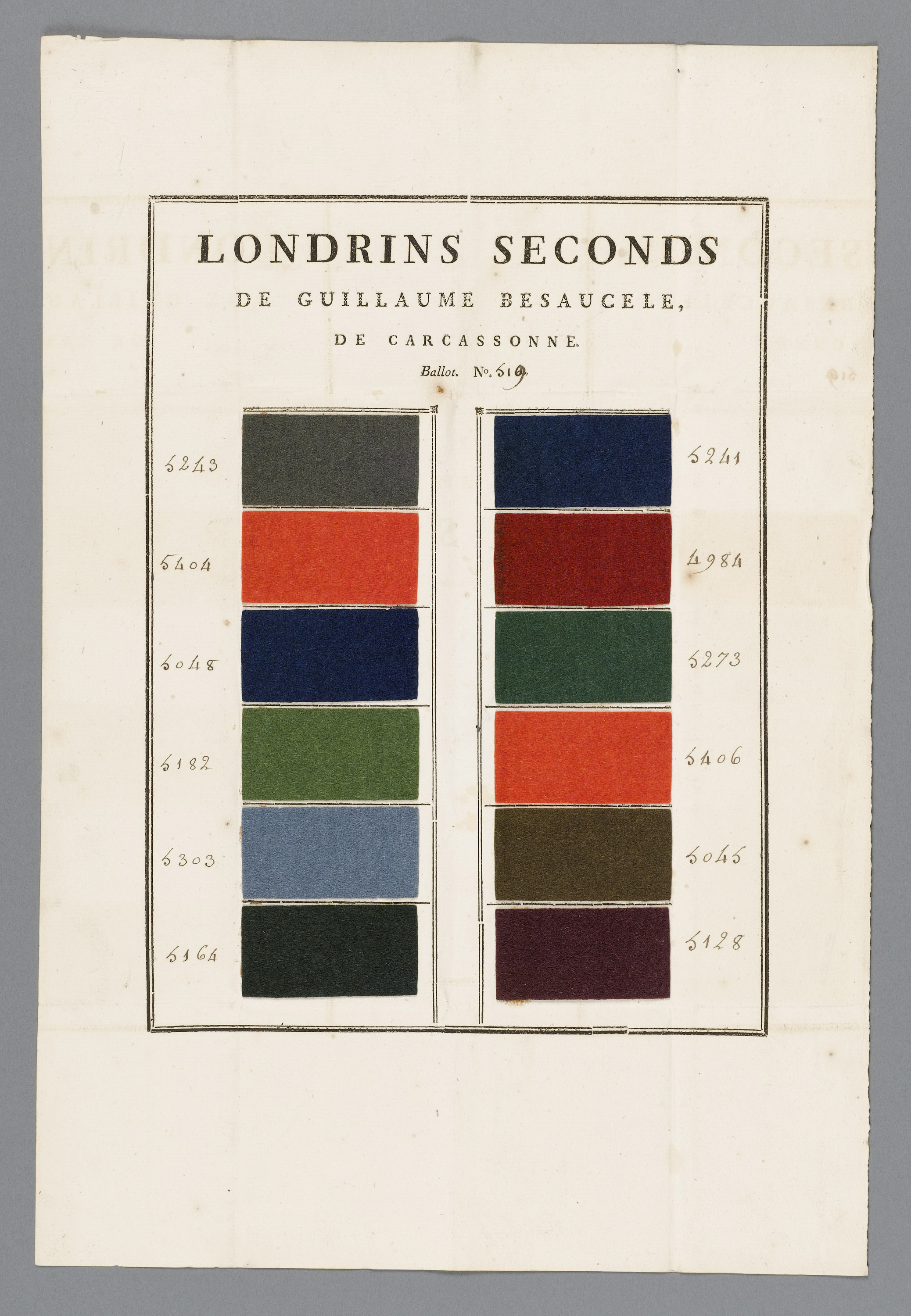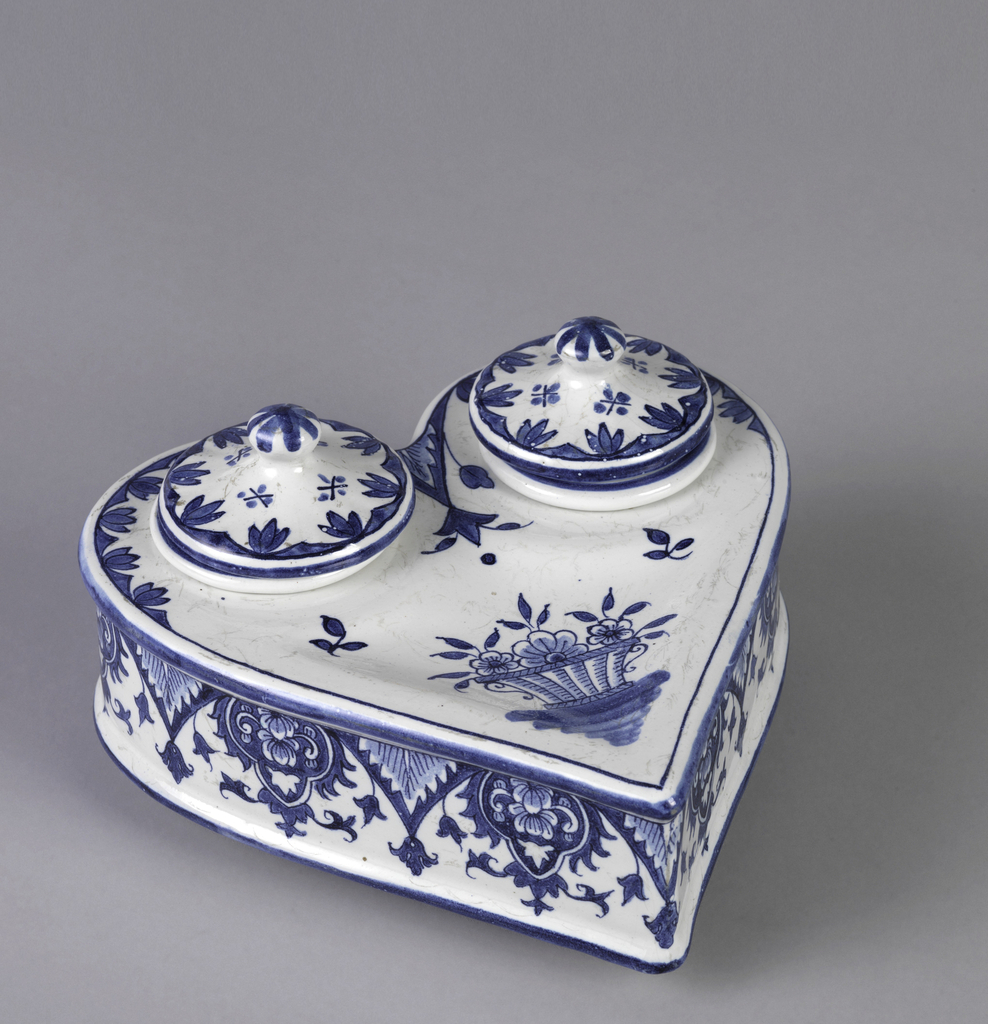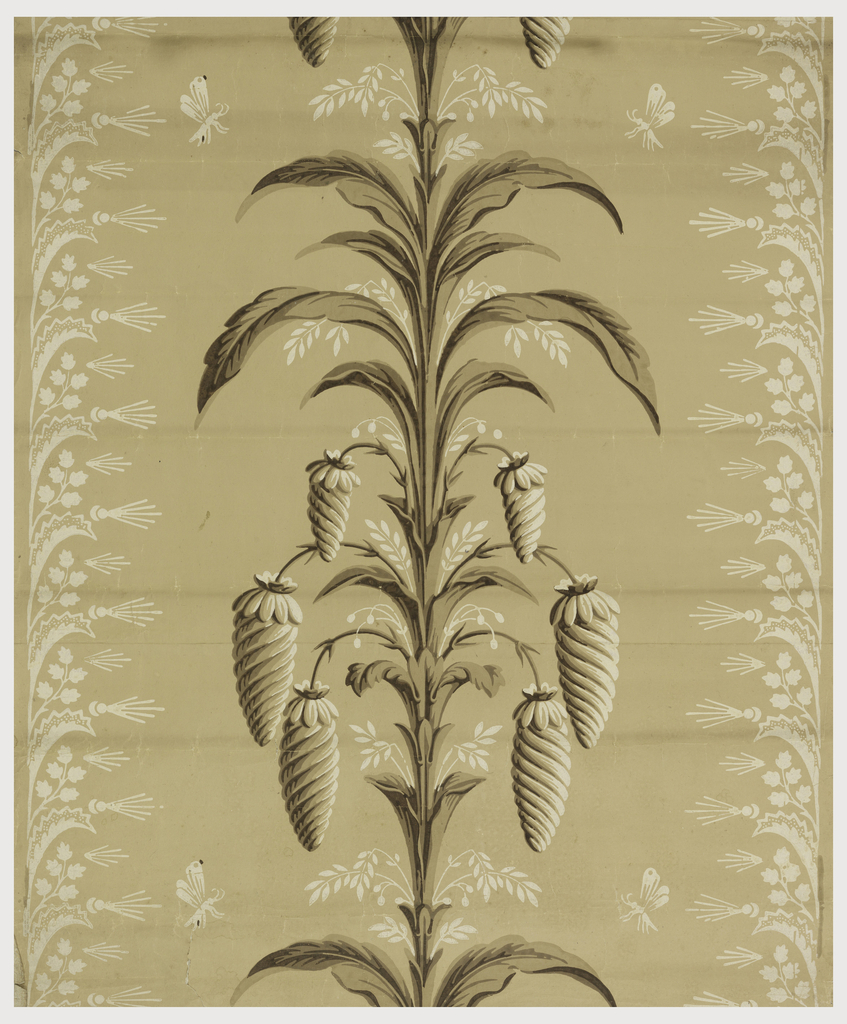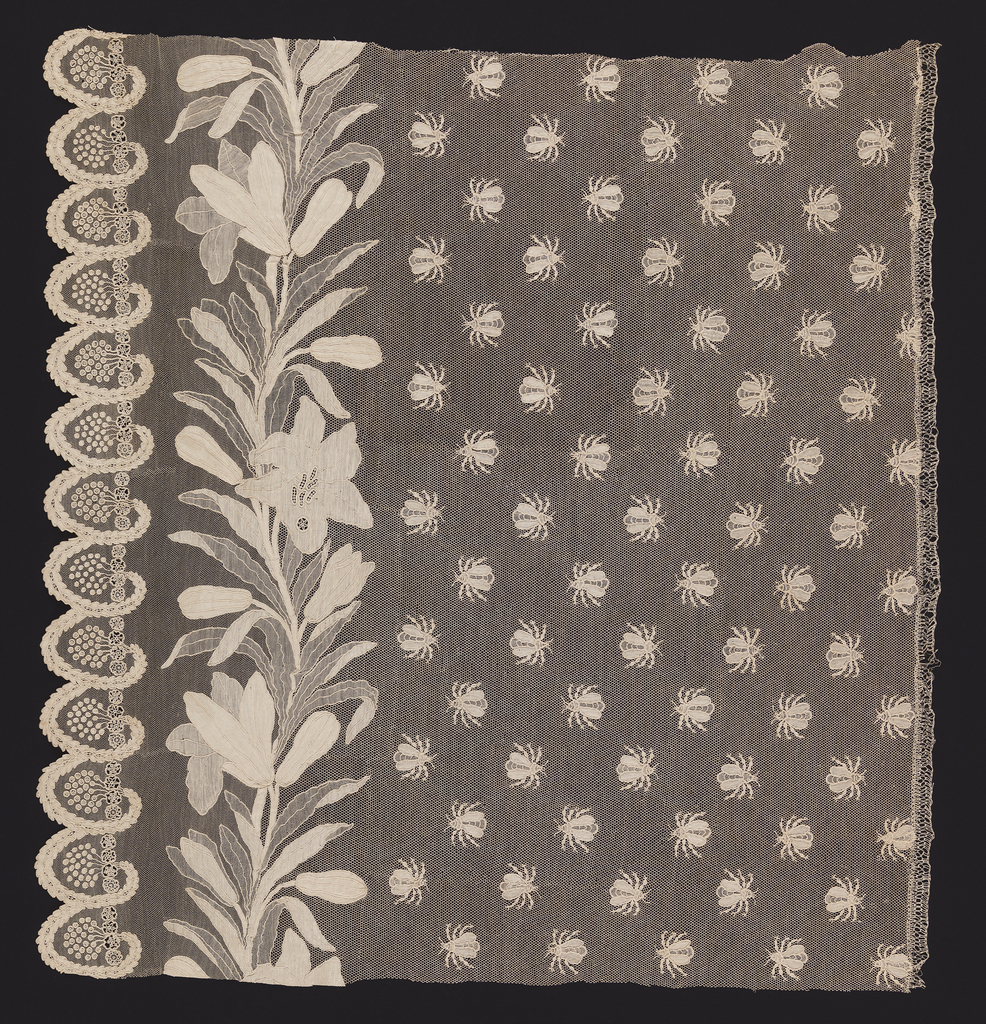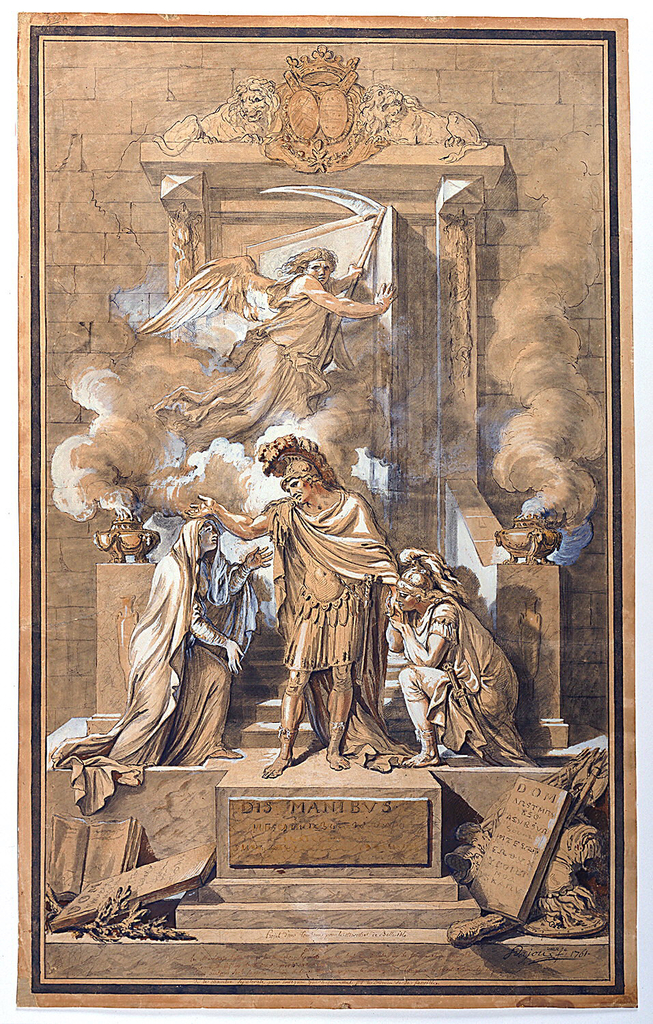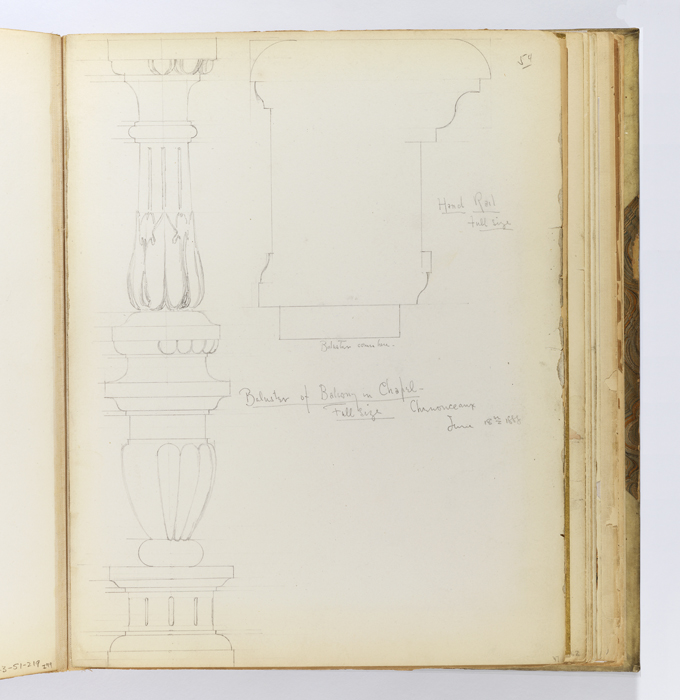Early in the eighteenth century, France was eager to imitate British success in exports of woolen textiles, especially to the Levant, an area roughly defined as a region of the eastern Mediterranean including Turkey and Egypt and points in between. By 1720, the French had vastly improved the quality of their woolens, and a system...
This delicate blue and white faience inkstand transports us back to a time in which letter writing was an integral part of daily communications. The inkstand was made in Rouen, an early center of production for French ceramics known as faience, which is tin-glazed earthenware. Between 1644 and the end of the eighteenth century, it is...
A highly symmetrical stalk grows confidently up the center of this sidewall panel, which was manufactured in France in the early nineteenth century. Acanthus-like foliage and strange, swirly pods droop heavily downwards, accented by wispy little branches of leaves and un-opened blossoms. Winged insects descend towards the stalk from either side. Presumably their mission is...
This valance fragment is just a small piece from a set of bed furnishings commissioned by Napoleon I (1769-1821) for his wife Joséphine (1763-1814). Intended for their home in Malmaison, located outside Paris, the commission consisted of a ceiling canopy, pair of curtains, bed cover and valance. Made of fine point d’Alençon lace by the...
This highly finished drawing is a design for a tomb by the French academician and sculptor Augustin Pajou (1730-1809). Dated to 1761, the drawing is executed with pen and wash and heightened with white gouache, and is signed and dated by the artist in the lower right corner. This tomb design is an innovative composition...
Whitney Warren (American, 1864–1943). Tile Floor, Diane de Poitiers Bedroom, Château de Chaumont, June 12, 1888. Brush and watercolor, graphite on off-white wove paper tipped into binding with fabric, 12 5/8 × 9 3/4 in. (320 × 248 mm), irregular. Cooper-Hewitt, National Design Museum, Smithsonian Institution, Gift of Mrs. William Greenough, 1943-51-216 Cooper-Hewitt’s Drawings, Prints,...
From its inception, exuberant, organic, and sensuous rococo style has inspired subsequent revivals and new movements. As rococo’s influence once again gains momentum, Cooper-Hewitt invites scholars Laura Auricchio and Paul Greenhalgh to discuss the social and cultural histories behind rococo in eighteenth-century France and its revival in Art Nouveau at the end of the nineteenth...
During its first wave of influence, the sinuous and sensuous curves of rococo rapidly spread across France, Holland, and Germany,developing a unique personality in each location. Cooper-Hewitt invites curators Henry Hawley, Reinier Baarsen, and Wolfram Koeppe to a panel discussion that examines the diaspora of rococo during the eighteenth century, and the regional differences in...
With the Pavilion des Arts et Design at the Tuileries last week, Paris was buzzing with design. I loved the Kartell windows with comments about design by such stars as Patrick Jouin and Ronan and Erwan Bouroullec, shown below, applied to the windows on Boulevard St. Germain. And of course I don’t go to Paris...
